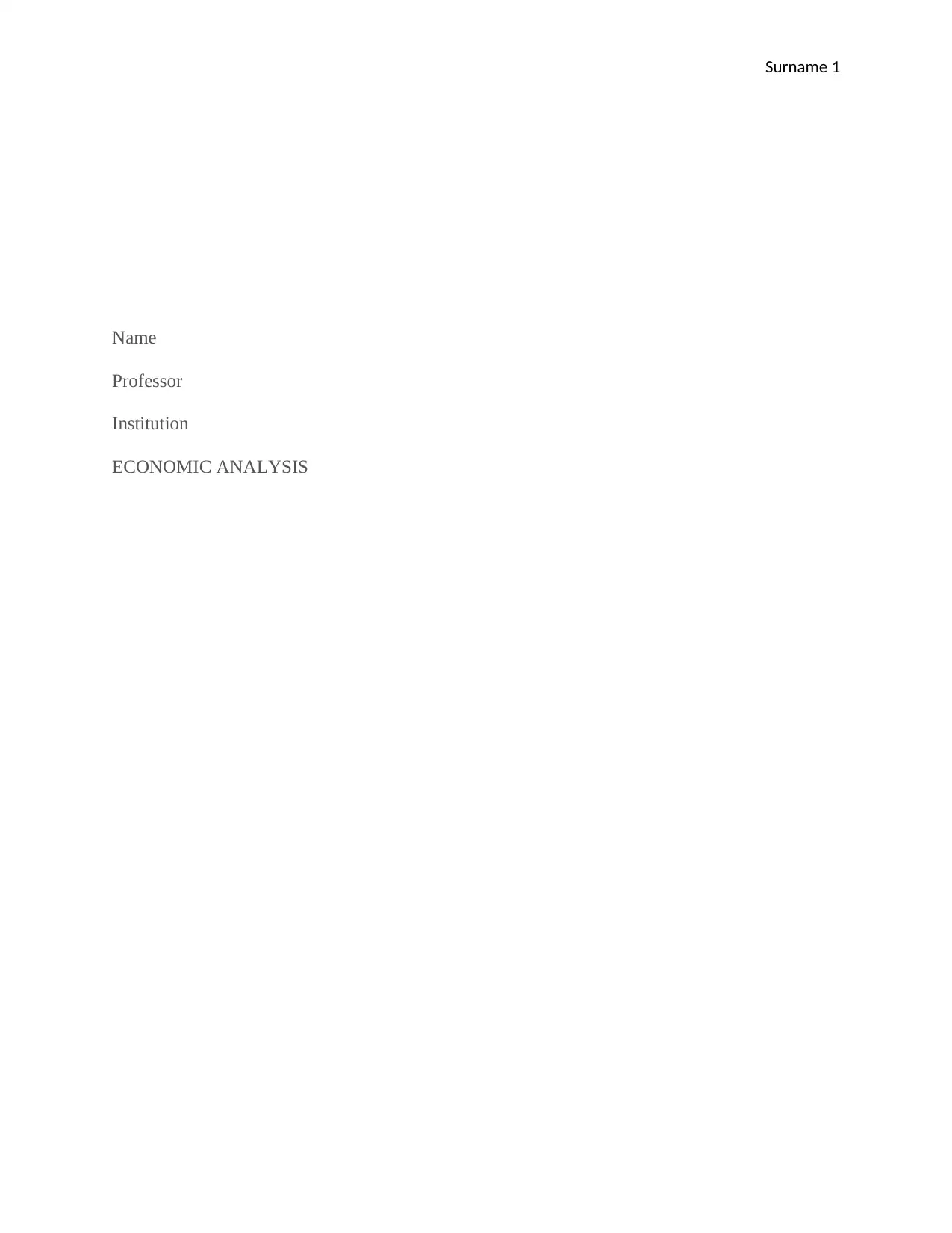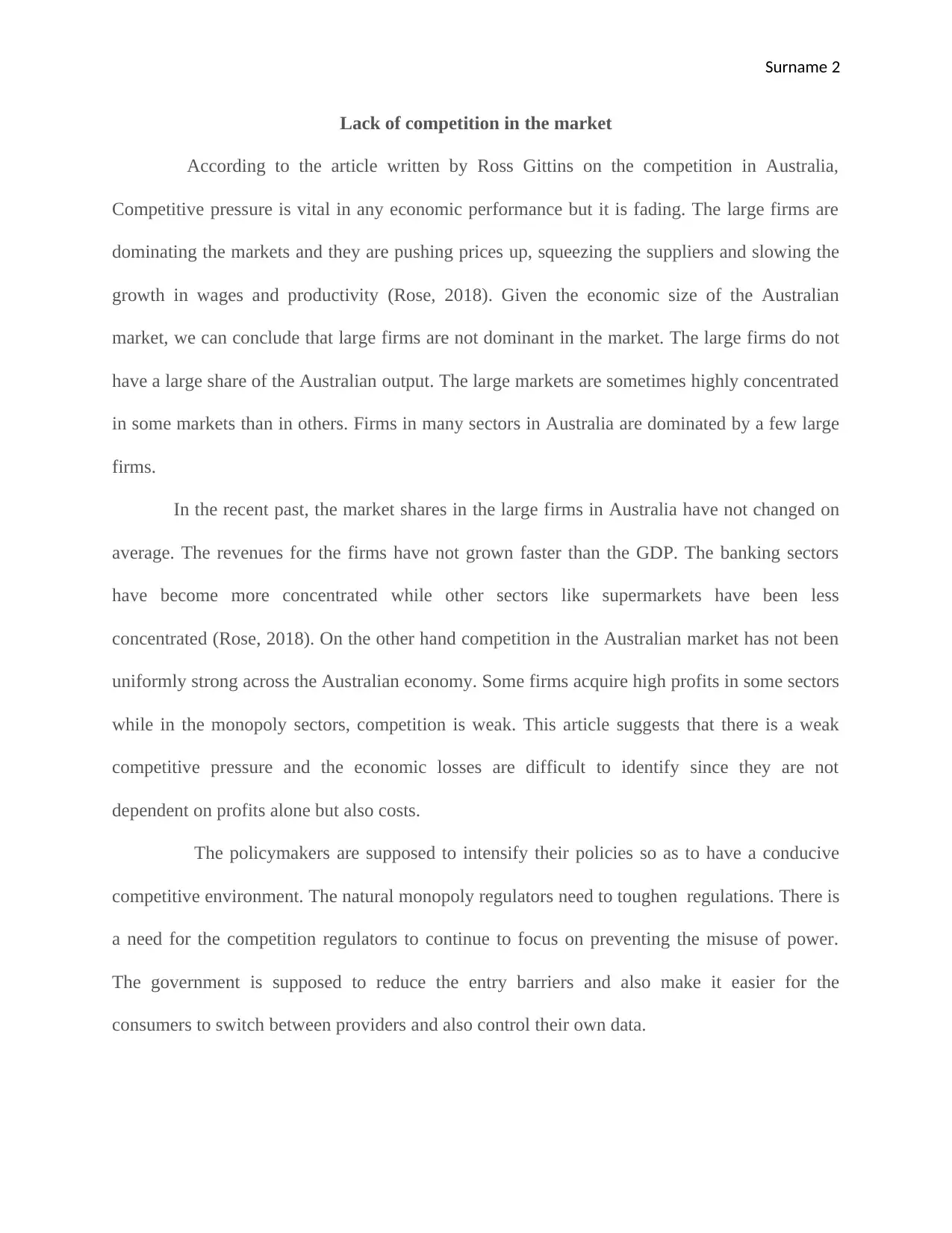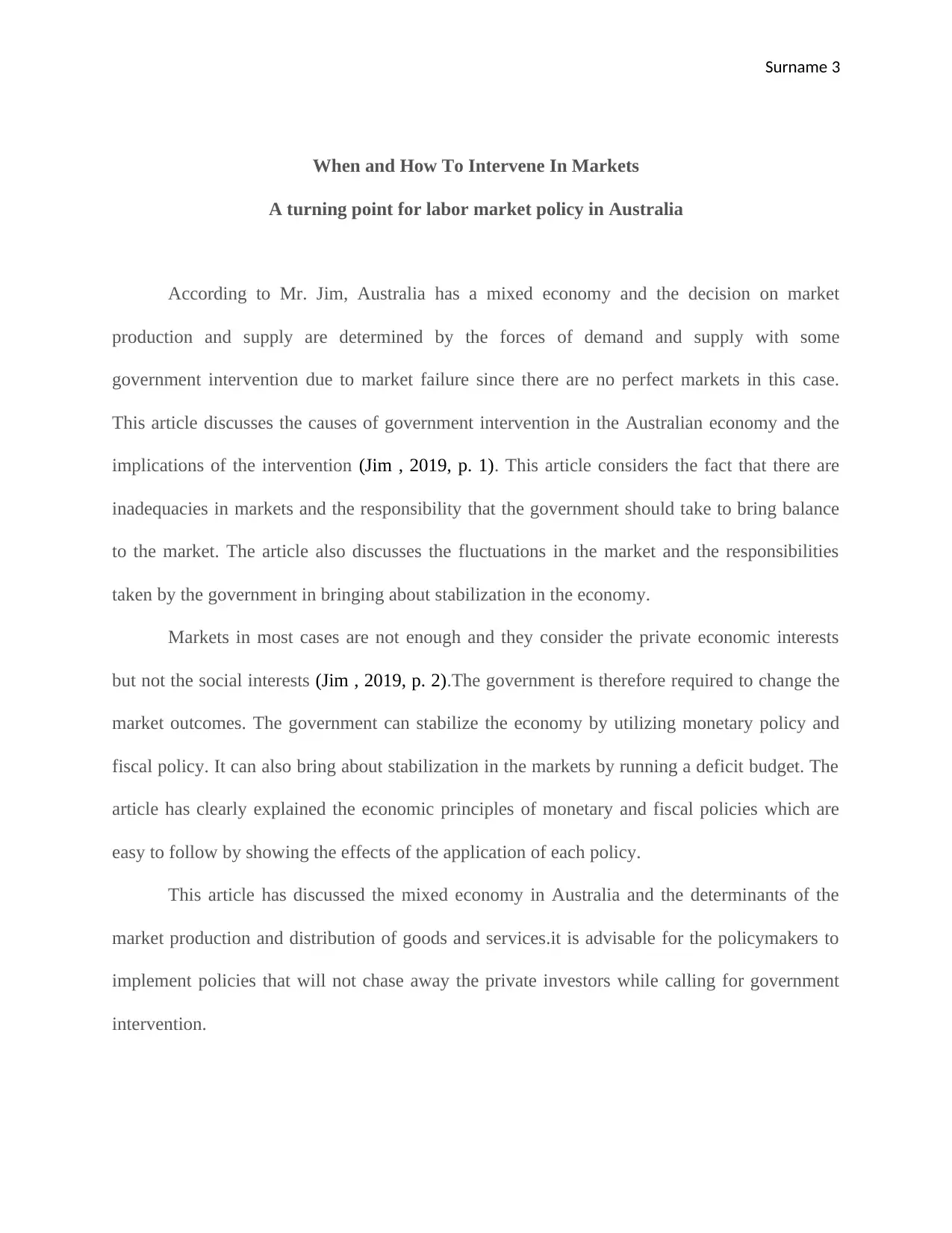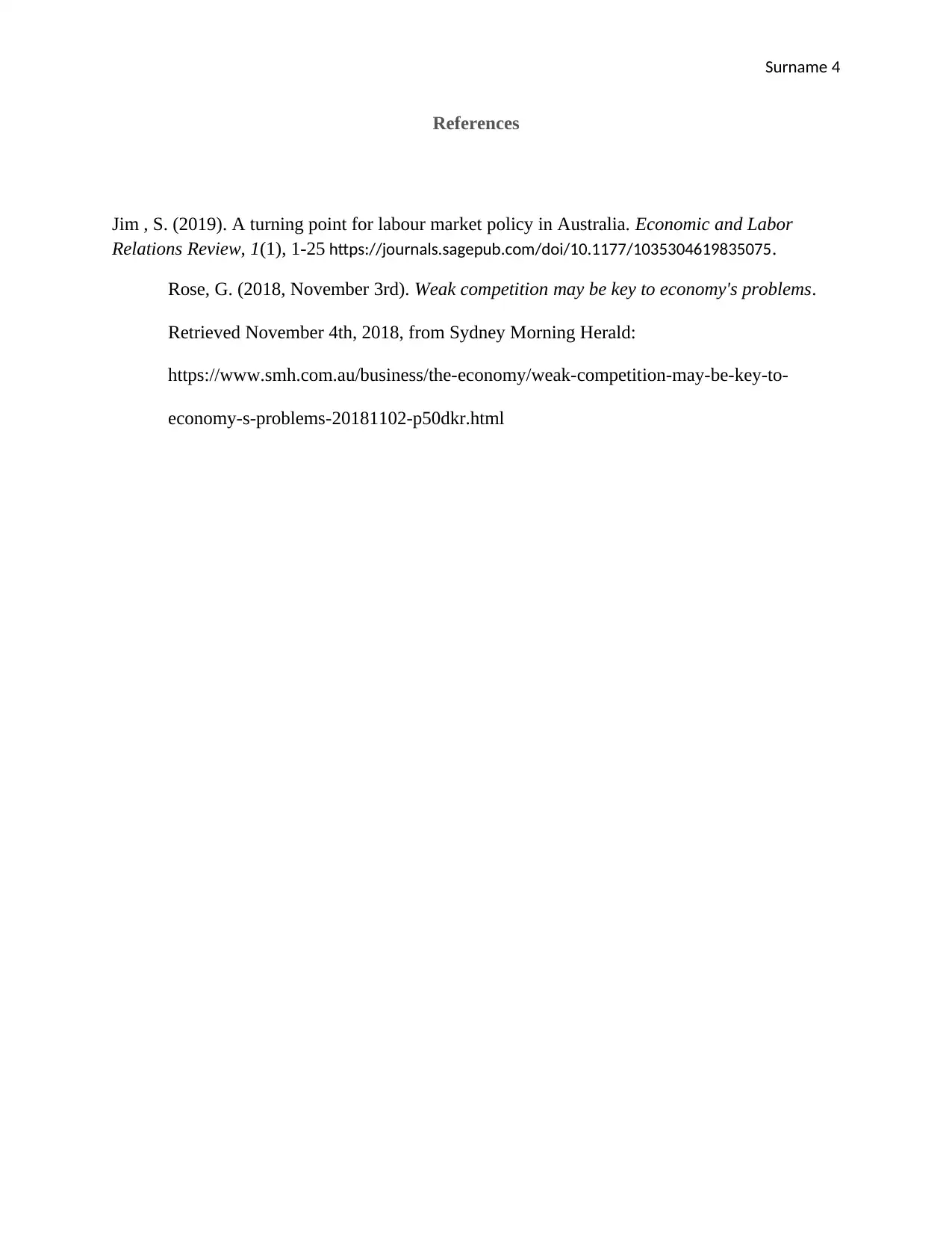Economic Analysis Report: Australian Market, Competition, and Policy
VerifiedAdded on 2023/02/01
|4
|682
|38
Report
AI Summary
This report provides an economic analysis of the Australian market, focusing on competition and government intervention. It examines the views of Ross Gittins on the fading competitive pressure in the market, where large firms dominate, pushing prices up, and impacting wages and productivity. The report also explores the role of government intervention in a mixed economy, discussing how government intervention is necessary due to market failures. It analyzes the use of monetary and fiscal policies for economic stabilization, and the importance of policymakers implementing effective policies. The report references articles by Rose (2018) and Jim (2019) to support its arguments, covering topics like the concentration of firms, the need for regulators to prevent misuse of power, and the determinants of market production and distribution of goods and services in Australia. The report concludes by emphasizing the importance of policies that encourage private investment while still ensuring government oversight.
1 out of 4










![[object Object]](/_next/static/media/star-bottom.7253800d.svg)